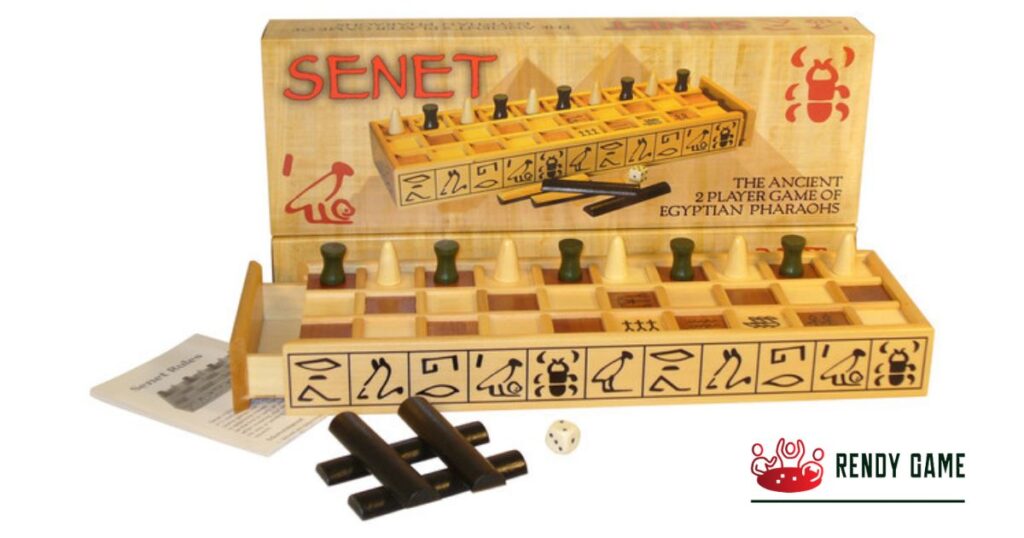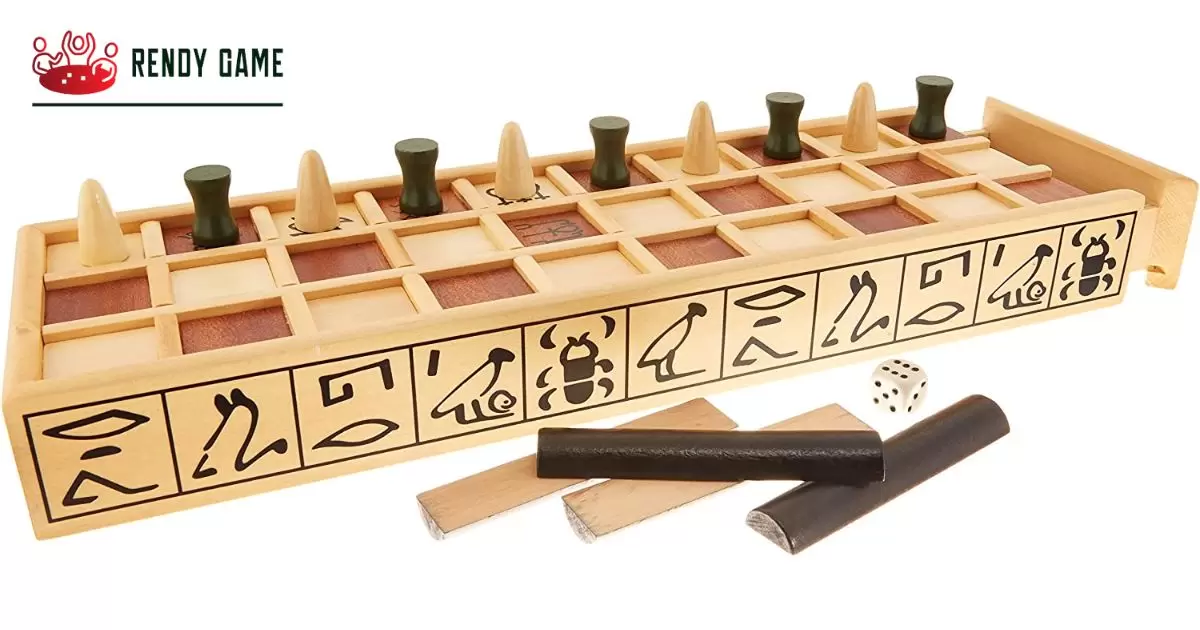Senet board game, an ancient Egyptian pastime, is a two player strategy game that dates back over 5,000 years. Consisting of a rectangular board with 30 squares arranged in three rows of ten, the game involves the movement of pawns along a serpentine path.
Imagine stepping into the shoes of an Egyptian strategist, deciphering the symbolic movements of pawns on the board. How to play Senet board game is a question that unlocks a journey into the mysteries of an ancient pastime.
Playing Senet board game is an engaging exercise in strategic thinking and skillful maneuvering. The game requires players to make strategic decisions as they navigate their pawns through the board’s twists and turns.
Basic Rules of How to Play Senet Board Game
Senet, a game with roots stretching back millennia, is played on a rectangular board with 30 squares arranged in three rows. Each player has five pawns, aiming to move them strategically to reach the other end and remove them from the board before their opponent.
The movement of pawns is determined by casting foursided sticks, offering a unique twist to the game’s strategy. Players take turns, strategically navigating their pieces along the serpentine path while employing tactics to block their opponent.
Setting Up Your Senet Board
Setting up a Senet board is a straightforward process that enhances the anticipation of gameplay. Begin by placing the board between the players, ensuring each faces the rows of squares. Each player positions their five pawns on the board’s dark squares in the two rows closest to them. The sticks used for casting are then placed nearby.
Players take turns, casting the sticks and moving their pawns accordingly. The visual simplicity of the board belies the strategic depth of the game, making the setup a prelude to the mental challenge that awaits. With the board ready and pawns in place, players are poised to delve into the intriguing world of Senet.
Understanding Movement of the Senet Board
In Senet, the movement of game pieces across the board is fundamental to the gameplay. The board comprises 30 squares arranged in three rows of ten, creating a serpentine path. Players take turns rolling dice to determine the number of squares their pieces can move.
Understanding the significance of each square is crucial, as some may hold special meanings, such as safe havens or setbacks. The goal is to navigate your five pieces from the start to the end, removing them before your opponent does.
Strategic Thinking in Senet

Senet is more than just a game of chance, it’s a test of strategic prowess. Players must think ahead, considering not only their moves but also anticipating their opponent’s actions. The arrangement of the board and the unpredictable roll of the dice create an ever changing landscape that demands adaptability.
Successful Senet players develop a keen sense of timing and positioning, knowing when to advance aggressively and when to adopt a defensive stance. The game rewards those who can read the board, foresee potential pitfalls, and strategically deploy their pieces.
Tips and Tricks for Successful Play
Playing Senet requires a blend of strategy and foresight. One key tip for successful play is to focus on pawn positioning. Aim to strategically place your pieces to control the board and limit your opponent’s options.
Be mindful of the symbols on the squares, as they carry significance. Understanding the symbolic meaning can help you make informed moves. Another valuable tip is to observe your opponent’s moves closely. Anticipate their strategy and adapt your gameplay accordingly.
| Tips and Tricks | Description |
| Pawn Positioning | Strategically place your pieces to control the board and limit your opponent’s options. |
| Symbolic Awareness | Understand the significance of symbols on the squares, as they carry meaning that can inform your strategic decisions. |
| Observing Opponent | Closely observe your opponent’s moves, anticipate their strategy, and adapt your gameplay accordingly. |
| Adaptability | Stay flexible and adapt your strategy based on the changing dynamics of the game. |
Senet Variations and Rule Adaptations
Senet’s evolution over the centuries has given rise to various rule adaptations and regional variations. Some versions incorporate additional squares with distinct effects, adding layers of complexity to the game. Rule variations can impact the pace and dynamics of play, offering players diverse experiences.
In certain adaptations, the significance of specific symbols may change, altering strategic considerations. Exploring these variations can provide a richer gaming experience and allow players to choose the version that aligns with their preferences.
Regional Differences in Gameplay
Senet’s popularity transcended ancient Egypt, leading to regional variations in gameplay. Different cultures adopted and adapted the game, introducing unique twists to the rules. For example, some regions may have variations in the number of squares or the layout of the board.
Understanding these regional differences adds an extra layer of excitement to the game, allowing players to explore diverse interpretations of Senet. Whether you’re playing the classic Egyptian version or immersing yourself in a regional adaptation, the shared enjoyment of strategic gameplay binds Senet enthusiasts across cultures.
Senet’s Influence on Art and Literature
Beyond the gaming board, Senet has left its mark on art and literature throughout history. Ancient artifacts depict scenes of people engrossed in Senet matches, showcasing the game’s societal significance.
Literary references to Senet abound, weaving the game into the cultural fabric of ancient civilizations. The symbolism of Senet often finds expression in artistic representations, reflecting the game’s connection to spirituality and the afterlife.
The Cognitive Benefits of Playing Senet
Playing Senet goes beyond entertainment, it offers numerous cognitive benefits. This ancient board game requires players to engage in strategic thinking, planning their moves ahead of time.
As individuals navigate the serpentine path of the Senet board, they enhance their problem solving skills and sharpen their ability to anticipate the opponent’s moves. The game fosters critical thinking as players assess the significance of each square and adapt their strategies accordingly.
Avoiding Common Mistakes for Success in Senet
While mastering Senet can be a rewarding experience, players often encounter common mistakes that can hinder their progress. One prevalent error is underestimating the importance of strategic positioning on the board.
Success in Senet requires players to carefully plan their moves, considering both offensive and defensive strategies. Another common mistake is misinterpreting the rules, leading to confusion during gameplay.
To achieve success in Senet, players should familiarize themselves with the rules and ensure a clear understanding of each square’s significance. By avoiding these common pitfalls, players can elevate their Senet experience and increase their chances of achieving victory.
From Ancient Roots to Modern Play
Senet has a rich history that spans over 5,000 years, evolving from its ancient roots to find a place in modern play. Originating in ancient Egypt, Senet was not only a game but also a reflection of cultural and symbolic significance.
Over the centuries, the game’s rules have adapted, leading to variations in gameplay across regions and cultures. Today, Senet has experienced a revival, with enthusiasts worldwide exploring this ancient pastime.
The Timeless Appeal of Senet
Senet’s timeless appeal lies in its ability to transcend the ages, captivating players across centuries. The game’s historical significance, strategic depth, and cultural resonance contribute to its enduring popularity.
Senet is not merely a relic of the past, it’s a living artifact that continues to engage players of all ages. Whether played for its cognitive benefits, cultural exploration, or simple enjoyment, Senet remains a testament to the enduring power of board games as magical beasts board game to connect us with our history and provide timeless entertainment.
FAQs
How do I start a game of Senet?
To begin, set up the board with its distinctive layout and place your pieces strategically. Each player’s objective is to navigate their pieces across the board and remove them before the opponent.
What is the significance of the Senet board squares?
Each square on the Senet board holds symbolic importance, influencing the movement and strategy of the game. Understanding these symbols is key to successful gameplay.
Are there variations in Senet rules?
Yes, Senet has evolved over time, and variations exist based on historical periods and regional differences. Exploring these variations can add depth to your Senet experience.
How can I enhance my strategic thinking in Senet?
Focus on planning your moves in advance, considering both offensive and defensive strategies. Sharpening your strategic thinking is crucial for success in the game.
Why does Senet have enduring appeal?
Senet’s timeless charm lies in its historical roots, strategic depth, and cultural significance. Whether played for cognitive benefits or cultural exploration, Senet continues to captivate players across generations.
Conclusion
In the world of Senet, the journey of strategic thinking and ancient gameplay comes to life. As we’ve explored the basics of setting up the board, understanding movement, and delving into advanced strategies, it becomes clear that Senet is more than just a game, it’s a window into the past, a connection to ancient minds.
The twists and turns of the Senet board mirror the twists of history, and as we navigate its path, we discover the cognitive benefits it offers, from honing problem solving skills to enhancing concentration. As the pieces move on the Senet board, so do we, bridging the gap between ancient roots and modern play.

